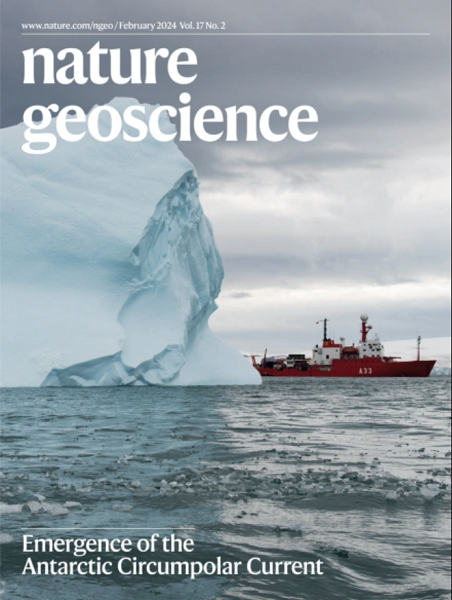Multi-decadal collapse of East Antarctica’s Conger–Glenzer Ice Shelf
IF 15.7
1区 地球科学
Q1 GEOSCIENCES, MULTIDISCIPLINARY
引用次数: 0
Abstract
Antarctica is currently losing net mass to the ocean primarily from West Antarctica and the Antarctic Peninsula, which together hold ~5.5 m of sea level rise potential. Yet, the East Antarctic Ice Sheet stores almost ten times more ice, and its evolution contributes significant uncertainty to sea level rise projections, mainly due to insufficient process-scale observations. Here we report the collapse of the Conger–Glenzer Ice Shelf in East Antarctica that culminated with its March 2022 disintegration. We use a combination of observations to document its evolution over four stages spanning 25 years, starting 1997–2000 when small calving events isolated it from the Shackleton Ice Shelf. In 2011, it retreated from a central pinning point, followed by relative calving quiescence for a decade; the remaining ~1,200 km2 of the ice shelf disintegrated over a few days in mid-March 2022. These observations of the Conger–Glenzer Ice Shelf collapse shed light on the processes involved, in particular, the impacts of ocean and atmospheric warming and extreme weather events. Ice shelf collapses, rare in the satellite record so far, have substantial implications for the stability of the Antarctic ice sheet and its contribution to future sea level rise. Satellite observations reveal that the Conger–Glenzer Ice Shelf collapse in East Antarctica occurred in four stages spanning a period of 25 years, culminating in its rapid disintegration in March 2022.


东南极洲的格格-格伦泽冰架几十年的崩塌
目前,南极洲的净质量主要从西南极洲和南极半岛流失到海洋中,这两个地区总共拥有约5.5米的海平面上升潜力。然而,南极东部冰盖储存的冰几乎是前者的10倍,其演变对海平面上升预估有很大的不确定性,这主要是由于过程尺度观测不足。在这里,我们报道了东南极洲的康格-格伦泽冰架的崩塌,最终于2022年3月解体。我们结合观察记录了它的演变,从1997年到2000年,当小的产犊事件将它与沙克尔顿冰架隔离开来时,它在25年的时间里经历了四个阶段。2011年,它从一个中心固定点回落,随后是相对平静的十年;剩余的约1200平方公里冰架在2022年3月中旬的几天内解体。这些对康格-格伦泽冰架崩塌的观测揭示了所涉及的过程,特别是海洋和大气变暖和极端天气事件的影响。迄今为止,在卫星记录中罕见的冰架崩塌对南极冰盖的稳定性及其对未来海平面上升的影响具有重大意义。
本文章由计算机程序翻译,如有差异,请以英文原文为准。
求助全文
约1分钟内获得全文
求助全文
来源期刊

Nature Geoscience
地学-地球科学综合
CiteScore
26.70
自引率
1.60%
发文量
187
审稿时长
3.3 months
期刊介绍:
Nature Geoscience is a monthly interdisciplinary journal that gathers top-tier research spanning Earth Sciences and related fields.
The journal covers all geoscience disciplines, including fieldwork, modeling, and theoretical studies.
Topics include atmospheric science, biogeochemistry, climate science, geobiology, geochemistry, geoinformatics, remote sensing, geology, geomagnetism, paleomagnetism, geomorphology, geophysics, glaciology, hydrology, limnology, mineralogy, oceanography, paleontology, paleoclimatology, paleoceanography, petrology, planetary science, seismology, space physics, tectonics, and volcanology.
Nature Geoscience upholds its commitment to publishing significant, high-quality Earth Sciences research through fair, rapid, and rigorous peer review, overseen by a team of full-time professional editors.
 求助内容:
求助内容: 应助结果提醒方式:
应助结果提醒方式:


